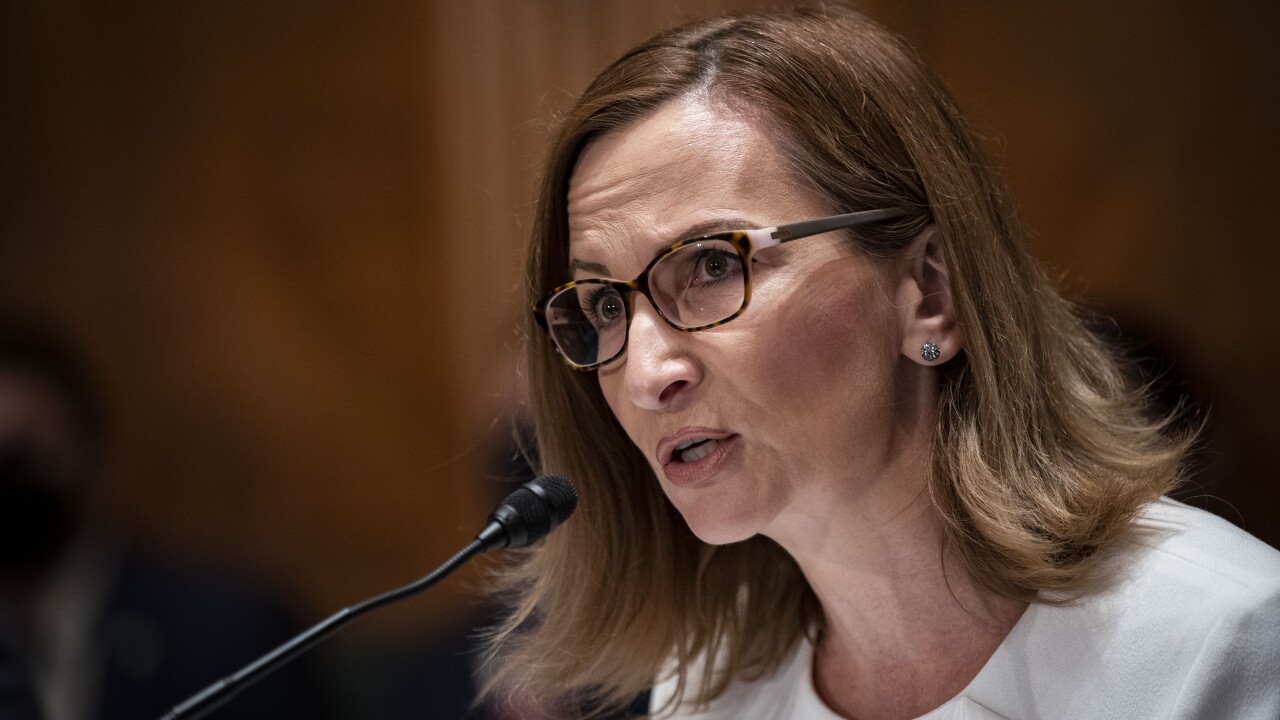
With the
But relatively little attention has been paid to nonbank stablecoin issuance. This is largely due to the common perception that nonbanks have been shut out of the issuance race — during the GENIUS debate, strong arguments were presented against allowing social media platforms, for instance, to monetize their communities and harvest even more personal data. The scars of Facebook's (now Meta's) Libra project
Nevertheless, the GENIUS Act does allow nonbanks to issue stablecoins. They just have more hoops to jump through.
One is to apply for and get approval from the Office of the Comptroller of the Currency, or OCC. Or, those willing to stay within a $10 billion market capitalization limit can apply for a charter from a state regulator whose regime has been given federal approval.
Public companies have an additional requirement. They will need to apply for and get unanimous consent from the Stablecoin Certification Review Committee, or SCRC. This is an oversight body composed of the chair of the Federal Reserve (or the vice chair for supervision); the chair of the Federal Deposit Insurance Corporation, or FDIC; and the secretary of the Treasury. The Fed and the FDIC have a reputation for being hostile toward crypto innovation, so permission may not be easy to get, but the regulatory mood is changing, as are the people at the head of those institutions.
Plus, all nonbank issuers have to commit to not using stablecoin activity data to promote services or content, not selling it to third parties, and not sharing it with non-affiliates without the express consent from the user.
Those limitations may sound onerous, especially for social media platforms, but they are unlikely to get in the way of other tech and consumer companies offering stablecoins for a range of use cases.
For instance, last week, Cloudflare — a web security company that manages internet optimization services and domain name systems — unveiled the
Details are still scarce. We don't yet know what blockchain(s) it will run on, although
But we do know the intended use case: to power transactions between algorithms. The unveiling came just two days after Cloudflare announced
This serves as a reminder that "payment stablecoins," the tokens covered by the GENIUS Act, are not just for on-chain settlement or cross-border transactions. Online micropayments have long been a glaring gap in content consumption and web services more broadly; today, the evolution of AI networks not only makes them essential, it also emphasizes the need for scalability, flexibility and automation. The programmability and online reach of blockchains makes stablecoins an obvious solution.
The dollar-backed digital assets have to clear many hurdles before they find a place in the future of finance, speakers at a Columbia University event said.
Beyond powering
In June, the
But the idea makes sense. Interchange, assessment and payment processor fees add up for retailers, and any basis point savings on the volumes Amazon and Walmart handle would be significant money. What's more, stablecoins have faster finality than credit card payments, enabling swift collection and refund management as well as greater capital efficiency. And both retailers move over $1 billion daily in payments to suppliers around the world; stablecoins can reduce cross-border and FX fees.
Beyond customer and supplier flows, retailer stablecoins can encourage user engagement by distributing activity points that earn discounts, or activating games that deliver further rewards. And they could power network expansion via agreements with third parties to accept the retailer coins in exchange for promotion.
It's also not hard to see the stablecoin argument for other large consumer companies — Uber, for instance, or Starbucks — that could save on card fees, accelerate supplier and contractor payments, stimulate user engagement and loyalty while potentially broadening affiliate networks.
And we are likely to see large multinationals issue stablecoins explicitly for internal use. Procter & Gamble, for instance, manages
True, corporations can use existing public stablecoins, or even
Stepping back, we're starting to glimpse how stablecoins can change the way businesses of all types see treasury operations, supply chain management and user engagement. This does imply stiffer competition for financial institutions; but it
What's more, we're seeing how stablecoins are starting to blur the boundaries between banks and nonbanks: Retailers will become payment providers, multinational conglomerates will move into supply chain financing, and banks will adopt engagement strategies that were once the domain of consumer companies. Obviously, the regulatory frameworks for each are very different, but we are likely to see gradual convergence there, too, with the GENIUS Act as a steppingstone.






